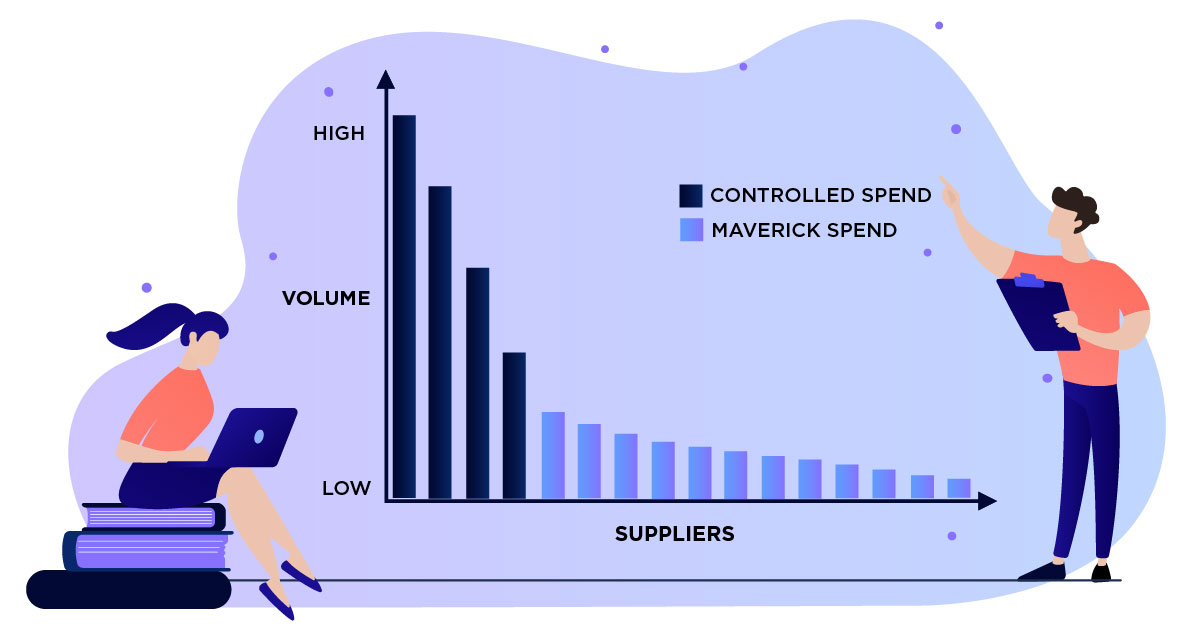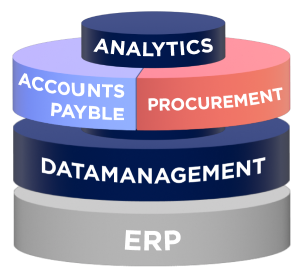3 min read
How can corporate organizations prevent maverick buying?
Editorial ICreative
Sep 26, 2023 8:45:00 AM

Maverick buying occurs within a corporate organization when purchases are made without oversight or control from Procurement. This has several disadvantages, such as the fact that it is not transparent or compliant. Furthermore, maverick spend can result in missed opportunities for procurement savings, and the constant addition of new suppliers to the vendor database. What steps can corporate organizations take to prevent maverick buying?
Maverick buying refers to the practice of making purchases within a corporate organization without following the established procurement processes or without the oversight and control of the procurement department. It occurs when employees or departments independently source and procure goods and services without adhering to company policies, contracts, or preferred supplier agreements.
This can lead to inefficiencies, increased costs, and missed opportunities for cost savings, as the organization loses the benefits of centralized procurement and bulk purchasing. Preventing maverick buying is crucial for maintaining transparency, compliance, and cost-effectiveness in the procurement process. But how do you go about this?
Gain insight in current procurement processes
The first step to minimize maverick buying, is understanding how big the problem actually is. Therefore, you have to gain insight in where the unmanaged spend is going. Get data on how much your organization spends. On what? How is it bought? By whom? With this information, you can make a spend profile to see how much of the spend is currently under management.
Once your spend is visible, you can analyze it. Spend analysis can give you a detailed overview of how much spend is not going through your procurement process, by tracking the invoices being sent directly to accounts payable.
Data reveals what happened, but not why. Involving different departments provides a complete picture of the current process. In the example of invoice processing, the organization maps out how the process currently runs, investigating how often invoices remain pending for too long. The organization can also examine the lead times from receipt to payment and the variation in these times. Do invoices typically stay pending for an average of 5 days or 2 weeks?
Once you know what is happening, you can start to gain understanding in why that is happening. So, it’s time to identify the bottlenecks in the current processes within your organization. A proven method like Lean Six Sigma can help you create insight in how your current purchase to pay process is structured, where the waste lies and how to reduce this.
Improvements to prevent maverick buying
It’s not until you really understand the core of the problem, when you can start thinking about a solution. There are numerous ways to enhance the procurement process and reduce or prevent maverick buying. But it’s important to keep in mind that employees are often used to their own way of making purchases. Therefore, it would be wise to go for adjustments that make the process user-friendly, clear, and accessible. That way, employees are less likely to fall back into old habits.
This could involve eliminating unnecessary steps to place an order or providing a purchase portal. For instance, offering a corporate purchase portal to employees ensures they order from preferred suppliers, streamlining your procurement process. When employees use this portal, you can be sure they are making purchases from suppliers already vetted by your organization. Additionally, the purchase will automatically go through the approval process with their manager.
The importance of communication and change management
While making processes and suppliers visible is essential to prevent maverick buying, the process must also be addressed upfront; internal communication about the desired process is vital. Raise awareness about the importance of preferred suppliers makes it easier to convince employees and makes them more receptive to change. Making the benefits of ordering from these suppliers tangible and concrete will encourage employees to adopt this practice.
If employees do not follow the central procurement process to place an order, maverick buying will persist, no matter how well the process is structured on the backend.
Change management is crucial but also the most challenging part, and it takes time. Therefore, I recommend organizations to work with an external change manager who can guide employees through the change and convince them of the benefits of the new way of working – in accordance with the established process. Furthermore, I believe in continuous improvement, which means not stopping once a solution is implemented. By continually analyzing your processes and data and communicating with employees, you can keep improving your processes and have the greatest chance of preventing maverick buying.
Want to prevent maverick buying at your organization?
To what extent is your organization currently capable of preventing maverick buying? What steps for improvement can you still take? Feel free to contact me to discuss these matters.
Curious about how an online central platform might look, enabling employees to independently place orders with preferred suppliers? Check out my demonstration directly.
 |
Christian Willemsen |










